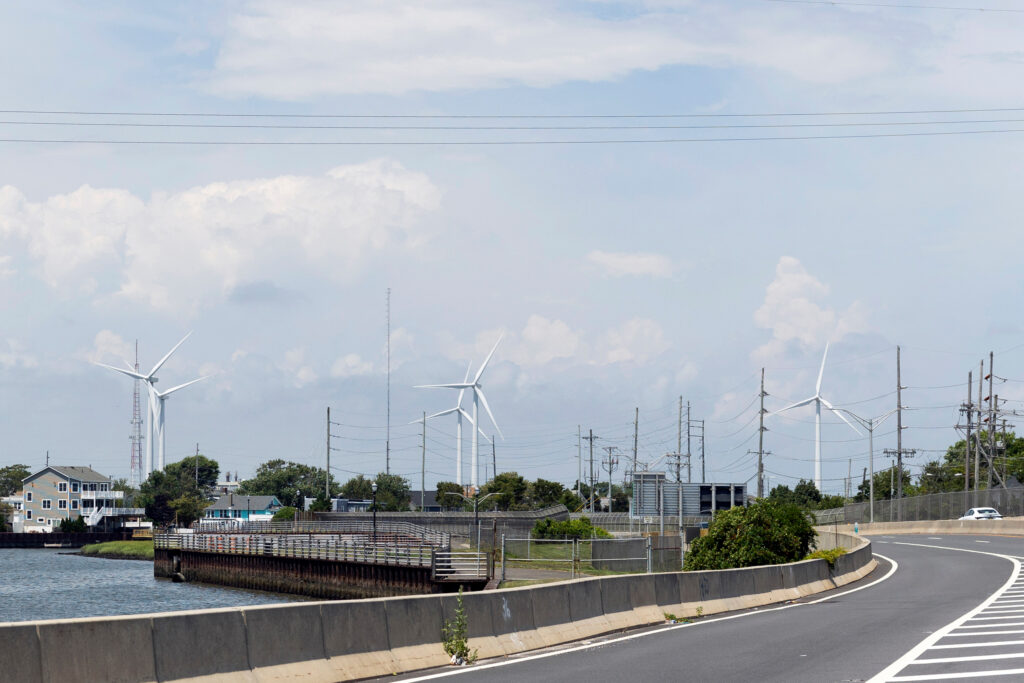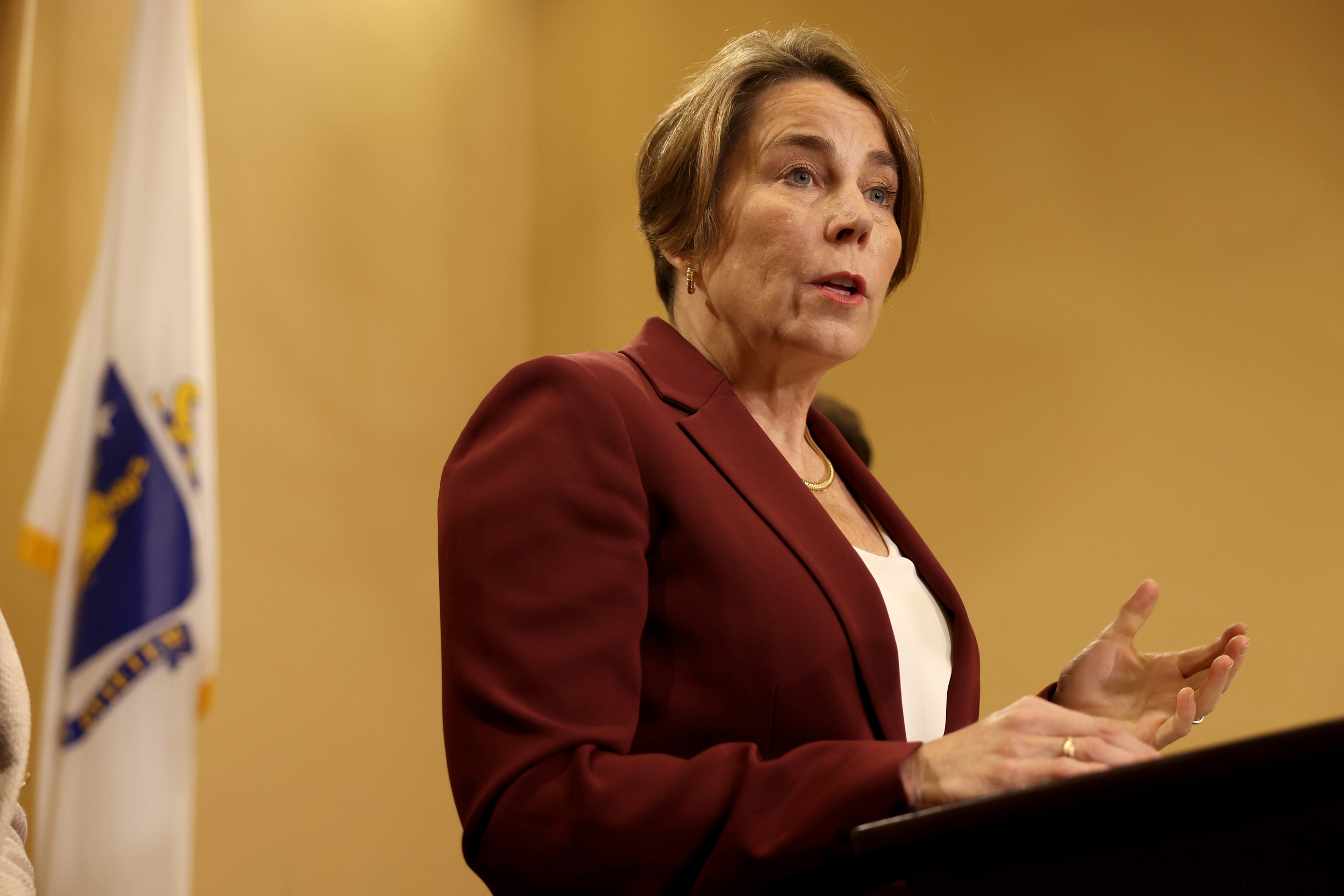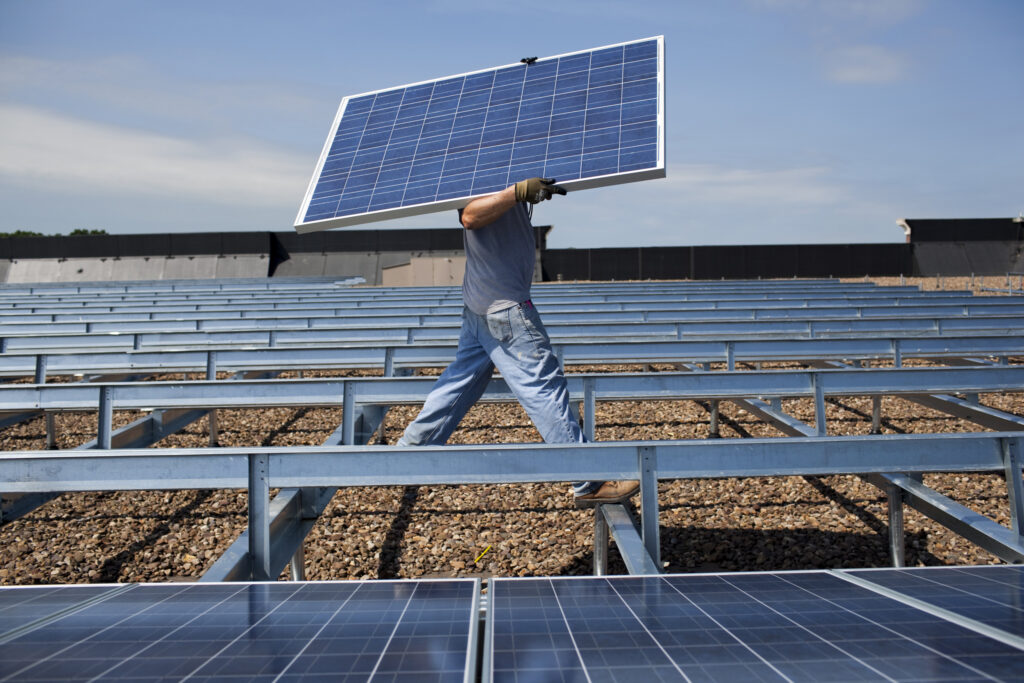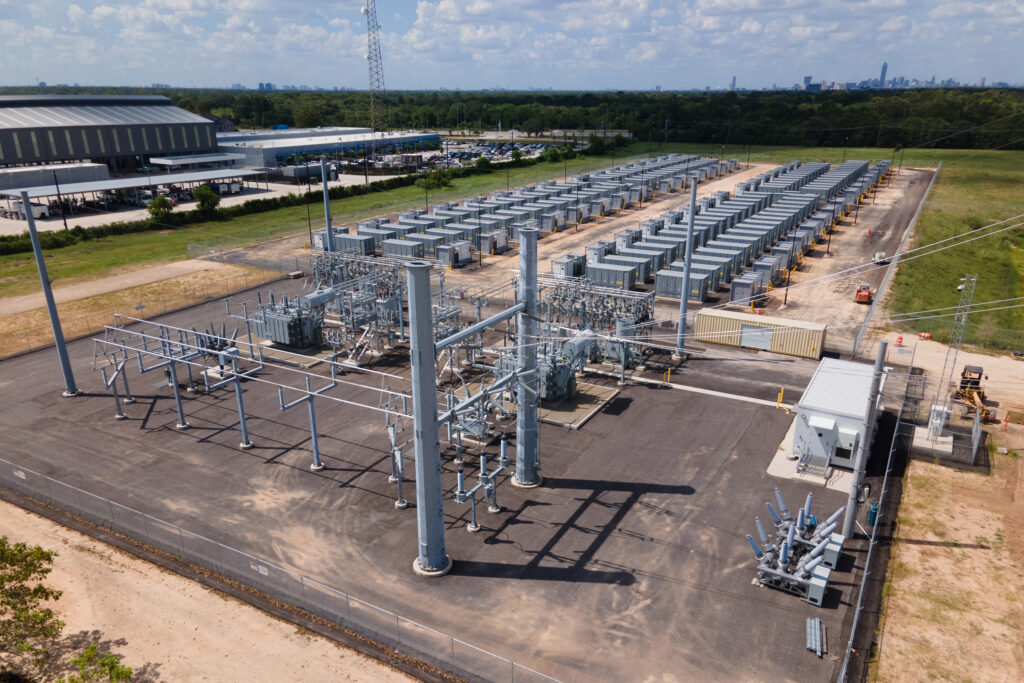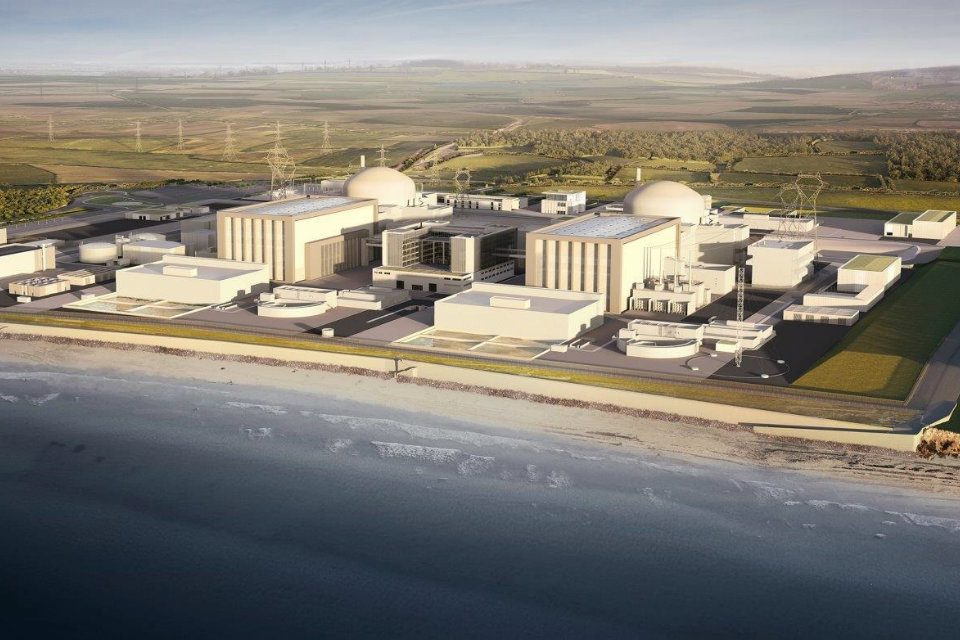Businesses have cancelled or delayed more than $14 billion of investments in U.S. clean energy projects so far this year, reflecting their uncertainty and pessimism over federal support amid President Donald Trump’s climate policy retreat, industry analysts reported Thursday.
The sector still is showing resilience—at least $4.2 billion in new renewable energy, grid, electric vehicle and battery projects were announced over the same time period, from January through April, according to the tracking report by the nonprofit group Environmental Entrepreneurs, or E2, and its research partner, Atlas Public Policy.
Some 10,000 jobs are expected to be created by these newly announced projects—including an electric truck assembly plant that the Jeff Bezos-backed startup Slate Auto said it would site in Warsaw, Indiana. That’s equal to the estimated number of job losses from all the clean energy projects that have been abandoned so far this year. Nevertheless, it’s a sharp reversal of trends E2 tracked in the sector over the previous three years, when $127.7 billion in new clean energy project announcements outpaced cancellations at a rate of nearly 50-to-1.
Officials at E2, a nonpartisan group of clean energy business leaders and investors, said it was an ominous sign as the Senate prepares to take up Trump’s “One Big, Beautiful Bill,” the House-passed tax and spending cut package that would eliminate most of the clean energy tax credits Congress passed in the 2022 Inflation Reduction Act.
“If the tax plan passed by the House last week becomes law, expect to see construction and investments stopping in states across the country as more projects and jobs are cancelled,” said Michael Timberlake, communications director for E2. “Businesses are now counting on Congress to come to its senses and stop this costly attack on an industry that is essential to meeting America’s growing energy demand and that’s driving unprecedented economic growth in every part of the country.”
The White House did not immediately respond to questions about the report.
The biggest of the cancellations that E2 tracked came in April. The United Auto Workers announced that Stellantis would not go forward with a $3.2 billion battery plant it planned to add to a giant shuttered assembly facility it is reopening in Belvidere, Illinois. And global energy giant RWE announced it was shuttering its U.S. offshore wind operations “for the time being” due to “the political environment” in the United States. RWE had invested $1.1 billion to develop wind projects offshore of New York, Louisiana and California.
While E2 tracks public announcements of new projects and cancellations, other efforts at tracking what’s happening in the clean energy sector provide a more detailed picture—and in some senses, a more optimistic one.
The Clean Investment Monitor, a project of the Massachusetts Institute of Technology and the consulting firm Rhodium Group, tracks actual capital spending in the quarter of all projects that have broken ground, and also includes investment in decarbonization projects at energy and industrial plants as well as consumer spending—for example, on EVs, rooftop solar and efficiency upgrades. For the first quarter of 2025, Clean Investment Monitor reported $67.3 billion in spending, a 6.9 percent increase from the same period in 2024. However, it was a 3.8 percent falloff from the previous quarter, and the second consecutive quarterly decline after an unbroken record of quarterly expansion that began in 2021.
Retail purchases of clean energy technology by households and businesses clearly were the driving force in investment in early 2025, the Clean Investment Monitor reported. Its analysis, like that of E2, noted the cancellation of a number of big clean energy projects over the quarter. And it warned of the headwinds for the clean energy supply chain, not only due to uncertain federal policy but the escalation of tariffs and broader macroeconomic pressures.
The American Clean Power Association (ACPA), which tracks utility-scale electricity projects, also put out its first quarter report Thursday, showing that developers installed 7.4 gigawatts of solar, wind and storage capacity, marking the second-strongest start to a year on record. (The strongest start on record was 2024, when 8 gigawatts came on line.) That brings total utility-scale clean power capacity to more than 320 gigawatts, which the association estimates is enough to power nearly 80 million U.S. homes. Of course, that electricity is not only powering homes but also businesses, where power demand is rising sharply due to data centers.
It was a record-setting quarter for battery storage capacity, which surpassed 30 gigawatts, a 65 percent increase from last year. Indiana quadrupled its energy storage capacity in just one quarter, with the help of a big system owned by the energy company AES that opened in April at the site of a former coal power plant.
Texas continued to lead the nation in both utility-scale solar and land-based wind capacity, with its total clean energy portfolio reaching more than 80 gigawatts, a 20 percent increase from a year ago, ACPA said. In all, eight of the top 10 states for clean power additions in the quarter voted Republican in the 2024 presidential election.
The association also saw continuing growth in the project development pipeline, with a 12 percent year-over-year increase in projects under construction or in the advanced stages of development. If all are built, it would add up to $328 billion in investment, said the group’s CEO, Jason Grumet.
“Clean power is shovel-ready at scale,” he said, while echoing E2’s concerns about the retreat from federal support for the sector in Washington.
“With unprecedented demand growth for electricity, we must send consistent investment signals across the energy sector,” Grumet said. “The greatest threat to a reliable energy system is an unreliable political system.”
About This Story
Perhaps you noticed: This story, like all the news we publish, is free to read. That’s because Inside Climate News is a 501c3 nonprofit organization. We do not charge a subscription fee, lock our news behind a paywall, or clutter our website with ads. We make our news on climate and the environment freely available to you and anyone who wants it.
That’s not all. We also share our news for free with scores of other media organizations around the country. Many of them can’t afford to do environmental journalism of their own. We’ve built bureaus from coast to coast to report local stories, collaborate with local newsrooms and co-publish articles so that this vital work is shared as widely as possible.
Two of us launched ICN in 2007. Six years later we earned a Pulitzer Prize for National Reporting, and now we run the oldest and largest dedicated climate newsroom in the nation. We tell the story in all its complexity. We hold polluters accountable. We expose environmental injustice. We debunk misinformation. We scrutinize solutions and inspire action.
Donations from readers like you fund every aspect of what we do. If you don’t already, will you support our ongoing work, our reporting on the biggest crisis facing our planet, and help us reach even more readers in more places?
Please take a moment to make a tax-deductible donation. Every one of them makes a difference.
Thank you,




